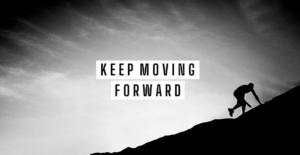
Have you ever been told that something is impossible? That the limits of human potential have been reached and cannot be surpassed? The story of Roger Bannister’s extraordinary journey to break the four-minute mile barrier challenges these notions and serves as an inspiring reminder that with unwavering determination and strategic action, even the most formidable barriers can be shattered.
What
For years, running a mile in under four minutes was deemed impossible by experts and scientists alike. Countless athletes had tried and failed, leading to the prevailing belief that the human body simply could not achieve this feat. Roger Bannister, however, refused to accept this limitation. He embarked on a mission that would not only rewrite the history books but also change the way we perceive our potential.
How
Bannister’s journey was one marked by relentless determination and strategic thinking. He started by developing a unique approach: running 0.25 miles in less than a minute, followed by a brief break. This unconventional strategy showcased his body’s ability to push beyond its perceived limits. Bannister’s belief that the impossible could be achieved provided the spark that fueled his unyielding pursuit.
But it wasn’t just about belief. Visualization played a crucial role. Bannister understood that visualization is not merely about daydreaming; it’s about using the power of imagination to drive action. He envisioned himself running that mile in under four minutes, which not only mentally prepared him but also led to the creation of a concrete plan.
Bannister wasn’t content with visualization alone. He knew he needed to pair it with actionable steps. He designed custom treadmill routines to build stamina, seeking inspiration from his interview with Edmund Hillary, who had conquered Mount Everest. By drawing parallels between their achievements, Bannister convinced himself that he possessed the strength to achieve greatness.
And then, the shoes. Bannister recognized that innovation could give him an edge. He collaborated with a cobbler to create custom shoes that were 50% lighter, reducing the strain on his legs. This innovation showcased his willingness to challenge convention and push the boundaries of what was possible.
What If
Imagine a world where Roger Bannister had succumbed to the prevailing belief that a four-minute mile was impossible. What if he had accepted the status quo and allowed doubt to cloud his vision? The transformative power of his journey serves as a testament to what can be achieved when we refuse to be confined by limitations.
What if more of us took a page out of Bannister’s playbook? What if we harnessed the power of belief, visualization, and actionable strategies to break through our personal barriers? By recognizing that our potential is often limited only by our mindset, we can embark on our own journeys of transformation.
Summary
Roger Bannister’s achievement of breaking the four-minute mile barrier is a tale of human resilience, strategic thinking, and unwavering belief. His journey defied the notion that some barriers are insurmountable, proving that with the right mindset, anything is possible.
Bannister’s story teaches us that belief is the catalyst for transformation. Visualization propels us into action and helps us pave the way toward our goals. Combining this mental fortitude with strategic planning, as Bannister did with his treadmill routines and innovative shoes, opens doors we once thought were locked.
So, the next time you encounter a seemingly impossible challenge, remember Roger Bannister’s story. Consider the power of your beliefs, visualize your success, and chart a strategic course of action. The barriers that once held you back may become stepping stones on your path to greatness. Just as Bannister redefined human potential, so too can you reshape your own limits and achieve remarkable feats.
Click Here To Watch The Video: https://youtu.be/_7E_gNbjNjM?si=9tp4OEYBL5UBuO0N








